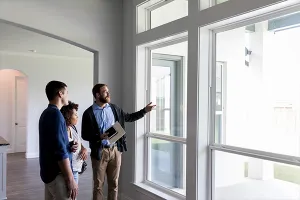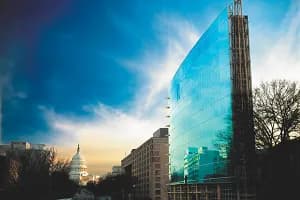
Empty big-box retail stores and vacant anchor stores in defunct malls are being revitalized and turned into indoor pickleball courts, leading to a “pickleball gold rush” in commercial real estate.
About 130 new pickleball courts are being added nationwide each month, according to USA Pickleball, the governing body for the sport in the U.S. But even that isn’t enough to meet demand: The Sports & Fitness Industry Association estimates nearly 25,000 courts must be built to keep pace with demand, which will require a $90 million investment. Converting existing properties and large abandoned lots has been a strategy to fulfill that need.
The game of pickleball, which is a combination of tennis and ping-pong, has seen rapid growth since the COVID-19 pandemic. Once thought of as a sport mostly for retirees, an estimated 36.5 million Americans played pickleball last year—up 158% since 2019, according to SFIA data. The largest age bracket for pickleball players is now 18 to 34 years old, comprising about 29% of the market, according to SFIA.
A Modern Amenity
Pickleball courts have become a hot amenity for multifamily buildings, single-family communities and public parks. But outdoor courts have garnered complaints about noise and encroachment on existing tennis courts. So, more pickleball courts are heading indoors, which also enables players to enjoy the sport year-round.
Developers are finding properties, such as recently shuttered Bed, Bath & Beyond stores, to house multiple indoor courts. Ace Pickleball Club, a recreational and tournament pickleball franchiser, sold 40 franchise licenses even before it opened its first location in Roswell, Ga., this summer. Ace Pickleball Club first began offering franchise licenses in February and is on track to sell up to 100 franchise licenses by the end of this year and open up more than 50 pickleball locations across the country by the end of 2024.
“Pickleball is the new frontier in commercial real estate,” says Diego Pacheco, chief growth officer at Ace Pickleball Club. “You don’t often see something that comes along that is different in recreational real estate. But the rapid growth of the sport is similar to what tennis did in the 1970s and 1980s. Landlords also love it because it brings more foot traffic from people with spending power. And it’s also good for attracting and negotiating new leases.”
Indoor pickleball venues usually fall under two broad categories: 1) what’s known as “eatertainment” or “sportstainment” (combining pickleball courts with a restaurant or sports bar) and 2) recreational facilities (pickleball courts for casual play and tournaments). Both categories are experiencing rapid growth. Property owners are finding that revitalizing vacant buildings can help speed up their entrance into this new market ahead of competitors.
Getting to the Market Faster
“The reality of today’s world is that with such high construction prices, it doesn’t often make sense to build from the ground up in building a pickleball facility for recreational and tournament space,” Diego says. “Everyone is trying to open up something. So, if you build it, just identifying the land and planning at least 24 months to get construction approval—by then, another group could pop in with their own pickleball facility.”
Ace Pickleball Club mostly targets vacant, second-generation big-box retail space for revitalization, which can then be retrofitted in about 100 to 120 days. The full-service franchiser partners with its franchisees to help identify a real estate space, specifically focusing on those with 25,000 to 50,000 square feet that can accommodate eight to 16 tournament-standard indoor courts.
Some malls, which are increasingly wooing tenants that bring experiential retail to help boost foot traffic, are funding the pickleball explosion. For example, a new pickleball chain called Camp Pickle announced this summer that it had raised $200 million from investors, including Simon Property Group, one of the largest owners of U.S. shopping malls. Camp Pickle will debut its first indoor pickleball facilities next year in Denver and Huntsville, Ala.
In Macon, Ga., the addition of pickleball courts was a key part of the Macon Mall revitalization project. A former Belk anchor store was turned into 32 pickleball courts—touted as one of the largest indoor pickleball facilities in the world.
Picklemall is another emerging player that recently opened its first 24-court facility at Arizona Mills Mall in Tempe, Ariz., at Arizona Mills Mall. It occupies a 104,000-square-foot anchor retail space. The company plans to expand over the next two years, opening locations in Minneapolis, Chicago, Dallas and Oklahoma City, among other places. Picklemall has the backing of billionaire financer Steve Kuhn, a Major League Pickleball founder.
“Pickleball is truly the ‘Benjamin Button’ of sports,” Kuhn said in an announcement for the new Arizona facility. “Every year, the demographics for the sport get younger and younger. Pickleball has the opportunity to cross the barriers that divide us—age, race, class—to foster togetherness and spread joy to the communities. That starts with getting creative about location. The future of pickleball is indoors.”










